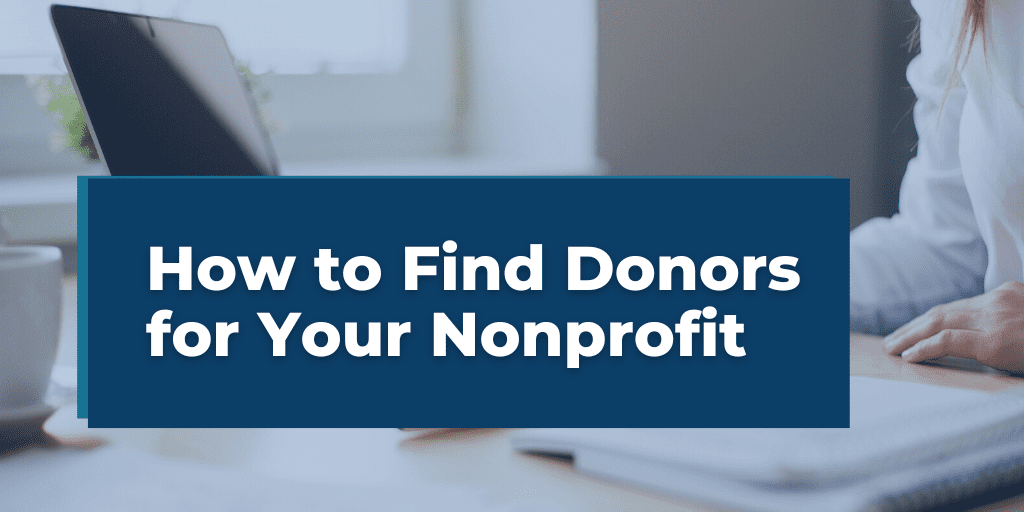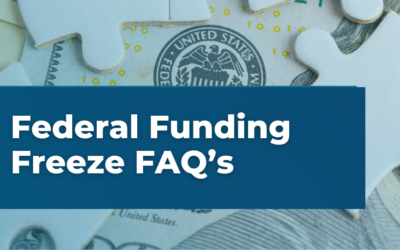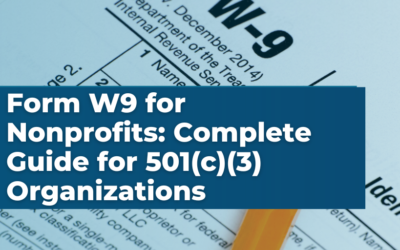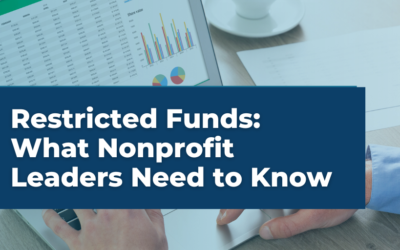How to Find Donors for Your Nonprofit
For nonprofit leaders, finding funding through innovative products or services is a top priority and an ongoing challenge. Understanding how to stand out involves not just knowing how to fundraise, but also connecting with supportive donors effectively. This article simplifies this complex task, offering clear steps to engage donors effectively.
This straightforward guide provides nonprofits with the essential tools for successful fundraising. It helps ensure your organization can sustain and expand its valuable efforts. Join us as we delve into the key steps of acquiring donors to secure the crucial funding your nonprofit needs.
Understanding Your Donor Base
To effectively attract donors, nonprofits must first understand who they are targeting. This section breaks down the steps to engage your ideal donor base.
Identify Your Ideal Donor
- Research: Start by analyzing your current donor base to identify common characteristics. Use this data to inform your approach to new potential donors.
- Demographic Information: Consider factors such as age, location, income level, and interests. Knowing these details can help tailor your messaging and outreach strategies.
Leverage Donor Personas
- Creating Personas: Develop detailed personas for different segments of your potential donor base. Include motivations, challenges, and how your nonprofit’s work aligns with their values.
- Apply Personas: Tailor your marketing strategies to match the interests and values of these personas for more impact. Your blog posts, landing pages, and social media posts should share consistent messaging.
Engage Your Current Donors
- Feedback and Insights: Keep in touch with your donors through surveys or chats to understand why they back your cause. This information can be invaluable in understanding how to appeal to new donors.
- Word-of-mouth: Encourage satisfied donors to share their positive experiences with their network. Personal recommendations can be a powerful tool in attracting new supporters.
Utilize Data-Driven Strategies
- Analytics Tools: Implement tools to track the success of your efforts and website content in real-time.
- Adjust and Optimize: Improve your strategy using data, concentrating on the methods that effectively engage your donors.
By thoroughly understanding your donor base, nonprofits can create more effective and targeted fundraising strategies. Next, we’ll show you how to create a message that truly speaks to potential donors in the upcoming section.
Crafting Your Message
Once you have a clear understanding of your donor base, the next crucial step is to craft a message that resonates. This message should not only inform but also inspire potential donors to act through different types of content.
Develop a Compelling Narrative
- Impact Stories: Share real-life examples and case studies of how donations have made a difference in your mission. These stories should highlight the change or benefit brought about by your work.
- Emotional Connection: Aim to create an emotional connection with your audience. People are more likely to donate if they feel emotionally moved by your cause.
Transparency and Accountability
- Tangible Outcomes: It’s important to detail how you’re using donations and explain the impact they have. Transparency about your operations and funding needs builds trust with potential donors.
- Annual Reports and Updates: Regularly share updates and annual reports detailing your achievements and financials. This openness reinforces accountability and can motivate further support.
Communication Channels
- Diverse Platforms: Utilize multiple channels to reach your audience, including email, social media, your website, and traditional media. Tailor your message to fit each platform’s unique audience and format.
- Consistency is Key: Ensure your messaging is consistent in all marketing efforts. This reinforces your narrative and key messages each time you communicate with potential donors.
Crafting a message that connects with potential donors is both an art and a science. By focusing on impact, emotion, and transparency, nonprofits can effectively convey their mission and inspire action.
Utilizing Digital Strategies
In today’s digital age, leveraging online platforms is essential for reaching potential donors and amplifying your message. This section outlines key digital strategies for effective donor engagement.
Social Media Outreach
- Platform-Specific Content: Share content that fits the strengths and audience of each of your social media accounts.
- Engagement: Foster interaction by responding to comments, sharing user-generated content, and participating in relevant conversations. This builds community and keeps your cause at the forefront of potential donors’ minds.
Email Marketing
- Personalized Campaigns: Use email segmentation to send personalized messages to different groups within your donor base. Tailored messages based on past interactions can increase engagement and donations.
- Value-Added Content: Offer more than just donation requests. Share insights into your work, success stories, and how each contribution makes a difference.
SEO for Nonprofits
- Keyword Optimization: Use your website as a marketing tool. Optimize content with keywords related to your cause, fundraising efforts, and the impactful products or services you offer.
- Quality Content: Regularly publish high-quality, relevant content that addresses your audience’s interests and questions. This not only aids SEO but also establishes your nonprofit as a thought leader in your field.
Leveraging digital strategies requires a blend of creativity, technical know-how, and consistent engagement. Nonprofits can broaden their impact and build deeper relationships with potential donors by leveraging social media and email marketing. The digital realm is rich with engagement opportunities, vital for any current fundraising strategy. Next, we’ll discuss building and nurturing relationships with donors to ensure long-term support.
Building Relationships
Securing a donation is just the beginning of a relationship between a nonprofit and its supporters. This section emphasizes strategies for building and nurturing these relationships to ensure ongoing support.
Networking and Partnerships
- Collaborate with Businesses: Partner with businesses that share your values for mutual benefits. Sponsorship deals or co-hosted events can broaden your exposure and attract new donors.
- Community Engagement: Actively participate in community events and networks. This not only raises awareness of your cause but also puts you in direct contact with potential supporters.
Events and Fundraisers
- Host Engaging Events: Whether virtual or in-person, events can be a powerful way to connect with donors. Consider hosting webinars, workshops, or fundraising galas that align with your mission and invite participation.
- Leverage Peer-to-Peer Fundraising: Encourage your existing supporters to fundraise on your behalf. This can take the form of sponsored challenges or social media campaigns, expanding your reach through their networks.
Stewardship Strategies
- Personal Thank-Yous: Acknowledge every donation with a personalized thank-you message. This gesture can make a massive difference in how donors perceive your appreciation of their support.
- Regular Updates: Keep your donors informed about how their contributions are making an impact. Regular updates create a sense of involvement and partnership in your mission.
Building lasting relationships with donors is crucial for sustained support. By engaging with the community, hosting meaningful events, and showing genuine appreciation, nonprofits can foster a loyal donor base. This ongoing engagement helps retain current donors and attracts new ones through positive word-of-mouth and increased visibility.
Leveraging Technology and Data
In the digital era, technology and data play pivotal roles in enhancing fundraising strategies and donor engagement for nonprofits. This section explores how leveraging these tools can optimize efforts and outcomes.
Donor Management Software
- Streamline Operations: Implement donor management software to streamline fundraising activities, track donor interactions, and manage donations efficiently. This technology can save time and resources. It allows you to focus more on relationship-building and less on administrative tasks.
- Enhanced Personalization: Use the insights gathered from donor management tools to personalize your communications and appeals. Tailored interactions based on past donation history, preferences, and engagement can significantly boost donor retention rates.
Data-Driven Decisions
- Analyze Donor Behavior: Collect and analyze data on how donors interact with your website, emails, and social media channels. Understanding these behaviors helps in crafting more effective outreach strategies.
- Segmentation for Targeted Campaigns: Segment your donor base using data insights to create more targeted and relevant fundraising campaigns. Create segments based on factors like donation size, frequency, interests, and location.
Integrating Analytics
- Digital Analytics: Utilize tools for your website and social media platforms to measure the impact of your digital content. This information is crucial for adjusting strategies to increase engagement and donations.
- Feedback Loops: Create mechanisms for collecting and analyzing feedback from your donors. This direct input can refine your approach to meet the needs and expectations of your community better.
Using technology and data makes operations smoother and offers insights for smarter decisions. Nonprofits that use these tools can improve fundraising, give donors a more personalized experience, and have a bigger impact. Technology and data can transform the nonprofit world, helping organizations meet their goals faster and better.
Conclusion
Finding donors is key to a nonprofit’s growth. True engagement and openness are essential, making donors feel part of and valued by your cause. The strategies we’ve shared are just the start. To keep up and stay engaged in the ever-changing world of nonprofit fundraising, you need to keep adapting and trying new things.
We hope this guide empowers your nonprofit to attract and retain the support necessary for your important work. Remember, each contribution is a step towards achieving your mission. Keep focusing on making meaningful impacts and building a community of supporters who believe in your cause. Together, you can navigate the challenges of fundraising and secure a brighter future for your nonprofit.
For organizations looking for tailored strategies or specialized accounting services, Velu is here to help. Contact us for personalized advice and support tailored to your nonprofit’s unique needs and challenges. Together, we can navigate the complexities of nonprofit fundraising and ensure a brighter future for your organization.





